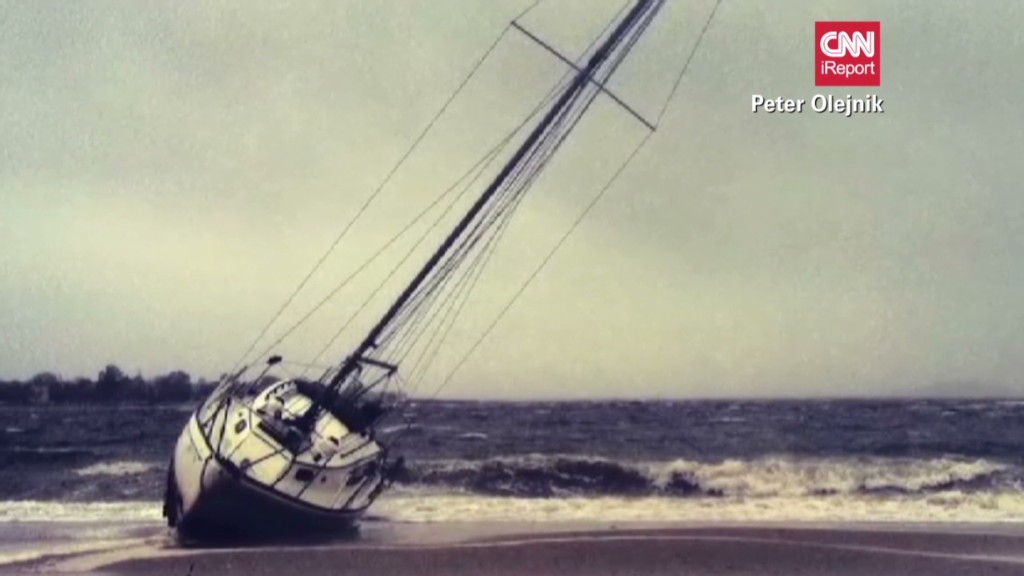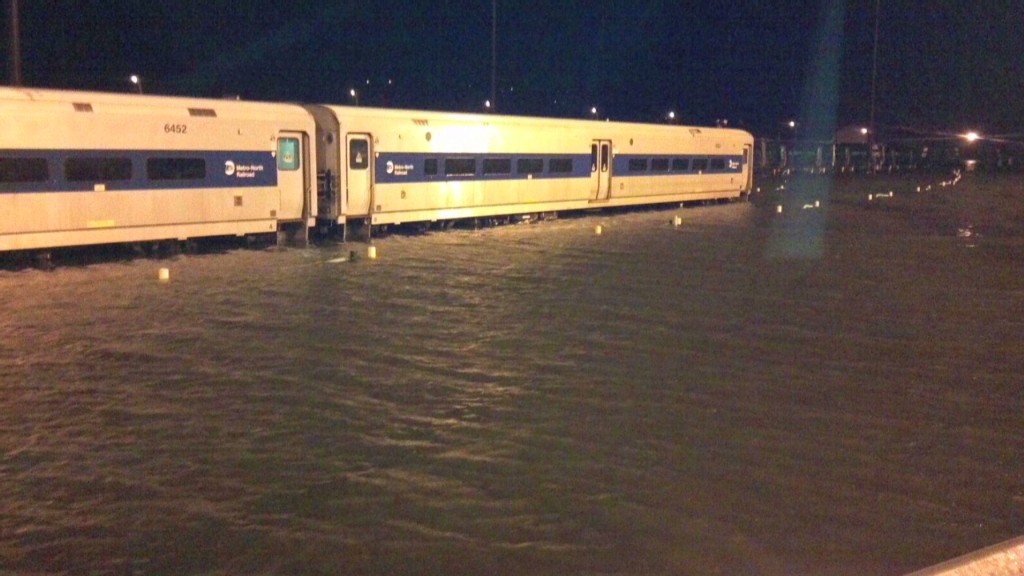
In the aftermath of Superstorm Sandy, gas prices are expected to rise a bit -- but it probably won't last long.
The storm is causing ripples in gas supply chains, but at this point, they seem to be minimal.
On the plus side, the Northeast's largest refinery is coming back online. The Philadelphia Energy Solutions plant, which processes a third of the region's oil, said it "came through the storm in excellent condition." That lessens the risk of a gasoline shortage that would drive up prices.
But some refineries weren't so lucky.
The second-largest plant in the region, Phillips 66 (PSX)'s Bayway Refinery in Linden, N.J., has lost electricity. The company reported that parts of the facility have flooded, and there's no telling yet whether equipment has been damaged. Normally, the plant would process 238,000 barrels of oil per day. Three of the its terminals nearby also remain shut down.
Related: Sandy cleanup will cost towns millions
Hess (HES), which runs a refinery in Port Reading, N.J., lost power Monday night and isn't sure when it will restart. Meanwhile, Hess has suspended operations at terminals in Connecticut, Maryland, New York, New Jersey and Virginia.
Another major player in the region, NuStar (NS), said five terminals across the Northeast appear to be in good shape while two other terminals have been damaged by water.
Even while they go back online, though, refineries still have to wait for oil shipping to ramp up again. The region's largest refinery, in Philadelphia, won't go back to processing 330,000 barrels of oil per day until that much is coming in.
Analysts have warned that prolonged disruption -- say, upwards of a week -- would cause prices to spike.
"At this point we're seeing a massive squeeze. Supplies are at well-below-normal levels," said Stephen Schork, editor of The Schork Report, a daily energy markets research letter.
That's because the capacity of Northeast oil refineries is much smaller than it was a few years ago. They handle just under 1 million barrels of oil per day, down from 1.6 million barrels per day in 2007.

Oil refineries in Europe have undergone a similar decline, which means that the United States can't simply turn to Europe for extra supply as it has in the past. The solution to any supply problems might come from nation's Gulf Coast states via pipelines and ships. However, drawing gasoline away from the Southeast would cause nationwide pressures on supply.
Sandy is the first real test since the big decline in refining capacity. Unlike last year's Hurricane Irene, which stayed just east of the refinery region, Sandy tore right through it.
Related: Sandy puts power grids to the test
Even if gas prices rise, though, Schork thinks they'll soon fall anyway.
The nation's drivers typically use about 60 million barrels of gasoline every week, but that's expected to drop to 55 million because of the damage caused by the storm, estimates Tom Kloza, chief analyst at the Oil Price Information Service, which compiles prices for AAA.
"But that drop will only go so far," said Michael Hewson, senior market analyst for CMC Markets in London.
He noted the price of an oil barrel has traded at about the same for six months, and that could prevent the price from falling dramatically in the weeks ahead.
CNNMoney writer Chris Isidore contributed to this report.


